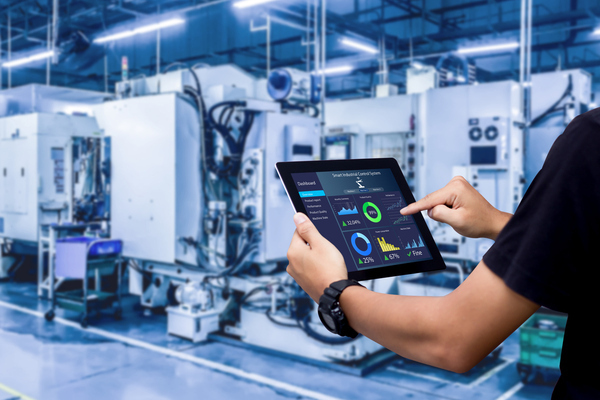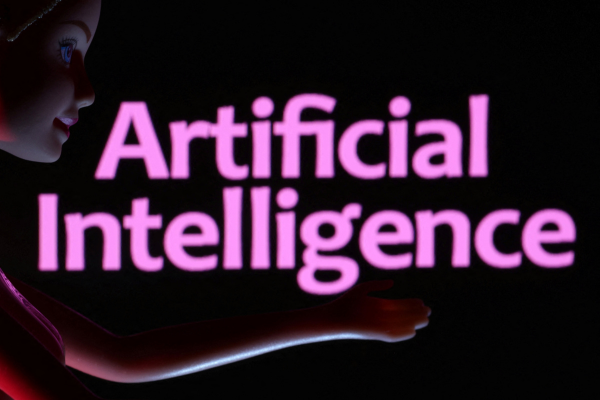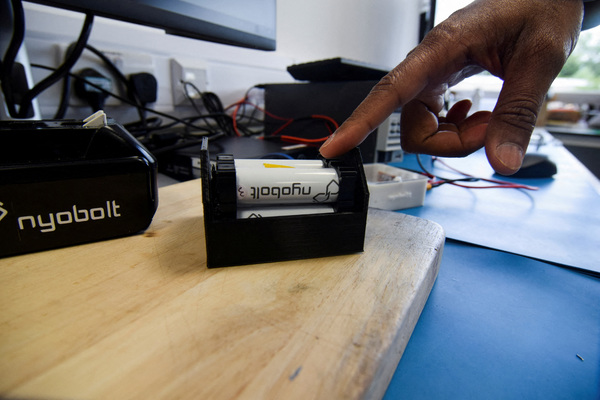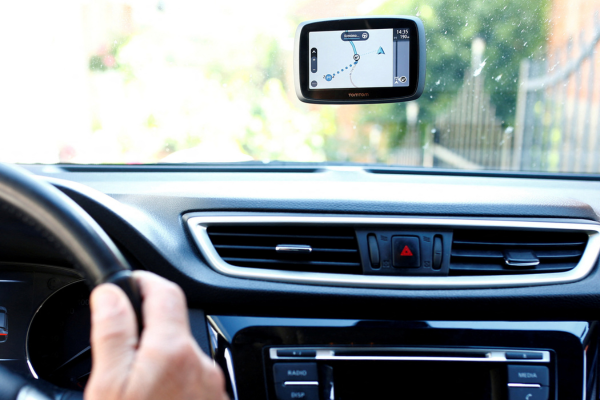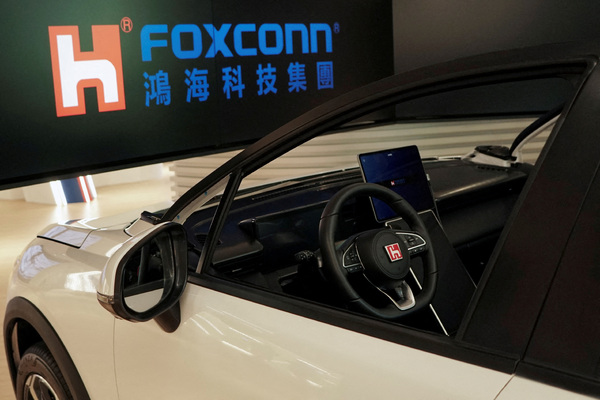The building of the future will be what we make it-July 2020
David Trice, Chief Product Officer for Honeywell’s enterprise software division, describes how workplaces are being affected by the pandemic and provides insight into the future of buildings in the new normal.
Change is constant and challenging to manage. But disruption breeds innovation and, with the right attitude, businesses can extract advantage from it, improving their efficiency and differentiating themselves from competitors. After the COVID-19 pandemic, businesses will need to be able to recover quickly, not just returning to normal but quickly pivoting to greater productivity.
One area where this is particularly true is in the management of commercial property. Portfolios of commercial buildings – offices, retail, warehouses, even hospitals must be reconfigured so they are able to meet changing business needs such as flexible working and occupant’s new expectations for safe and healthy buildings.
Portfolio owners and real-estate managers must upgrade their property assets, adopting smart building advancements and leveraging breakthroughs in software and digital technology. It’s crucial that they do this while maintaining efficiency of energy use through, for instance, heating and lighting systems that respond to occupancy numbers and at the same time promote productivity by ensuring occupant comfort.
And for larger organisations this must be done at scale, with multiple buildings managed in similar ways. While this adds a new layer of complexity, it also provides an opportunity for growth through greater optimisation of costs and returns.
Thriving in a world of change
The Covid-19 pandemic has changed how and where many people work, with millions of employees at home or relocating to suburban premises. But the pandemic won’t last forever. And as we approach normality some businesses, especially retailers and manufacturers, will need their employees to return to their previous workplaces.
But people will only be persuaded to return to their places of work if they are confident that they are safe. They will demand that buildings are healthy, with hygienic desktops and furniture and with clean air that is disease- and pollutant-free. And they will want to be confident that other occupants are sufficiently distanced and don’t have symptoms of illness.
There will be a change in mindset here. Businesses will move from looking at the safety of buildings to looking at the safety of individual employees, wherever and whenever they are in a building. To achieve this, buildings must have “healthy by design” built into their infrastructure and their operational strategies.
This doesn’t have to be complex although there will be a need to collect appropriate data. Sensors – for air quality and temperature for instance – will monitor whether a building is healthy and comfortable for its occupants. People will be another source of data, self-certifying that they are healthy before they enter buildings, perhaps leveraging the convenience of mobile technologies. Facility leaders will be able to monitor entry points and movement within buildings, and identify chokepoints or underused spaces.
Then, with appropriate privacy protections in place, this data can be used to make decisions about how the building is managed. It could be used to automate certain processes such as changing heating levels or air flows and even automatically opening doors as authorised people enter and exit, as a way of reducing physical contact with potentially contaminated surfaces.
Agile businesses
All businesses need to be agile so that they can manage changes, such as altered patterns of building use, effectively. For example, it may be necessary to mothball part of a building, perhaps during a downturn, to reduce running costs. Occupants must know in advance that this is planned so they don’t leave documents and possessions in that part of the building. They also need to know the effect that closure will have on them: where will they sit, which meeting rooms can they use, where is the nearest printer, where are the emergency exits? And they need to feel physically comfortable when they start work in this new space.
Excess building assets don’t always have to be mothballed of course. They can be adapted for different uses, perhaps as meeting or innovation centres, hot-desking spaces for visitors, or even rented out to other companies. When this happens, there will be different requirements for security, energy and machine use. The building will have to be managed accordingly.
If the right data about workspaces is collected, and if facility leaders engage available technologies properly, workplaces can be used efficiently. Employees can be grouped together optimally with consequent increases in productivity. At the same time costs can be lowered by reducing energy consumption. And if conditions in warehouses, factories, healthcare and retail spaces are optimised, goods and raw materials can be kept in an ideal state and stored with less damage, improving the bottom line.
This may be a complex task for human-level decisioning. However, facility leaders need to think in terms of the opportunity that is provided when data is collected and analysed automatically. With this in place, there is an opportunity to create autonomous buildings run by software: these can deliver real added value across the business.
AI technology and autonomous buildings
Autonomous control is important. And when autonomous control is bolstered by artificial intelligence (AI) control systems that “learn”, efficiencies can be improved dramatically.
For instance, large buildings often have complex HVAC (heating, ventilation and air conditioning) systems with chillers, boilers, ducts and fans. They are affected by their occupants and by external factors such as weather or air quality. Traditionally, these systems have instructions hard coded into them, with rules and values that could never change - except through human intervention.
Today’s changed vision is for systems that have little need for human intervention because they are supported by analytical software and AI. These systems will have rules that can respond to current conditions, changing outputs every few minutes. By analysing the combined effect of a variety of parameters such as internal and external temperature energy use, and the number and location of occupants, they will be able to control buildings more effectively. And with AI they will “learn” from the outcomes of previous decisions, to improve future ones.
While this vision is not a reality today, it is readily achievable, and Honeywell is working towards it. The savings will be huge. Even with a simple system, we have already found that energy savings of over 10 per cent can be achieved; in some cases, the savings can be as large as 30 per cent.
Monitoring and centralised control
Effective monitoring of buildings is essential. Closed off areas still need to be monitored for safety and security, as do buildings with few human occupants, such as automated factories and warehouses. The ability to monitor with cameras and sensors saves money as it means that security staff don’t always have to enter closed off areas.
A monitoring system that is enhanced with AI can respond to unexpected events without human intervention, for instance changing the air temperature or summoning help. They can also be used to monitor and predict the maintenance requirements of equipment such as elevators, HVAC systems and security gates. This type of digitised maintenance means that scheduled maintenance models can be transformed, and unexpected stoppages avoided.
Monitoring can be conducted using centralised control systems. These allow a portfolio of buildings to be managed from one location, meaning that it is much easier for facility leaders managing a portfolio of buildings to compare the performance of different buildings.
Managing building portfolios
Many facilities leaders need to operate a large portfolio of buildings: some organisations have tens of thousands. In these circumstances, it is useful to compare the performance of different buildings and see which ones are less efficient, for instance in their use of energy.
There are many opportunities to collect and compare relevant metrics: energy consumption; temperature and humidity; patterns of equipment use; occupant comfort ratings; air quality. These can be used to evaluate the efficiency of individual buildings and compare trends over time. However, to manage a portfolio of buildings, the data collected from different buildings, which inevitably have disparate operational systems, must be harnessed and then normalised in some way so that a consistent and comparable data stream, to and from buildings, can be achieved.
This is where we see the biggest opportunity. A truly connected portfolio, sitting on a truly open architecture creates massive opportunities for autonomy and optimisation. To do this at scale you need the right data architecture. Imagine an intelligent gateway that can think and learn, able to create a common data model for each building. This would need a secure connection to the cloud, where Big Data analytical techniques could be used on structured and unstructured data to create a consistent view of building operations from an enterprise perspective. Such an architecture would enable advancements like AI, that can then be used to optimise buildings management.
A system like this would mean that benefits can be driven at scale across the portfolio, because performance can be compared across different locations. Portfolio managers would have the ability to identify buildings that are operating most efficiently and those that are the worst performing. Comparison of the different processes followed by the best and worst performing assets would deliver insights that could transform costs and returns.
Retrofitting efficiency
Many modern buildings are now designed with a digitised control system including some sort of feedback mechanism. Unfortunately, older buildings do not have this technology. However, this type of system can be retrofitted to older buildings. Once the data needed to control a building has been identified, ways of collecting that data, such as sensors and cameras, can be installed. Software can then analyse the data and send appropriate instructions to the controls in the building – which is where you begin to see major returns.
The big risk for buildings with no digitised control - is doing nothing. Waiting to upgrade a building, can cost more as you will be wasting money, for instance in unnecessary heating costs or because areas of a building are under-utilised, while delaying the upgrade. In addition, even though it is easy to fit new sensors, the controls in older buildings are harder to integrate with software driven systems.
A changed environment
As we plan for re-entry into a post-pandemic world, we know employees will demand that buildings are healthy places in the same way that they’ve begun demanding smart spaces in their work environments. They will expect comfort, security and the ability to work and collaborate more efficiently. And facilities leaders will need to be able to meet these requirements wherever they are, even running a fleet of buildings from a coffee shop if necessary.
A better tomorrow includes buildings that are healthy, flexible, sustainable and efficient to run. These buildings, run by intelligent, autonomous control systems, will protect people, secure assets and stabilise operations. It’s up to us to create them.
Read Honeywell’s Whitepaper: The Digital Transformation of Commercial Real Estate
Read Honeywell’s Whitepaper: The Digital Transformation of Commercial Real Estate

Business Reporter Team
Most Viewed
Winston House, 3rd Floor, Units 306-309, 2-4 Dollis Park, London, N3 1HF
23-29 Hendon Lane, London, N3 1RT
020 8349 4363
© 2025, Lyonsdown Limited. Business Reporter® is a registered trademark of Lyonsdown Ltd. VAT registration number: 830519543
